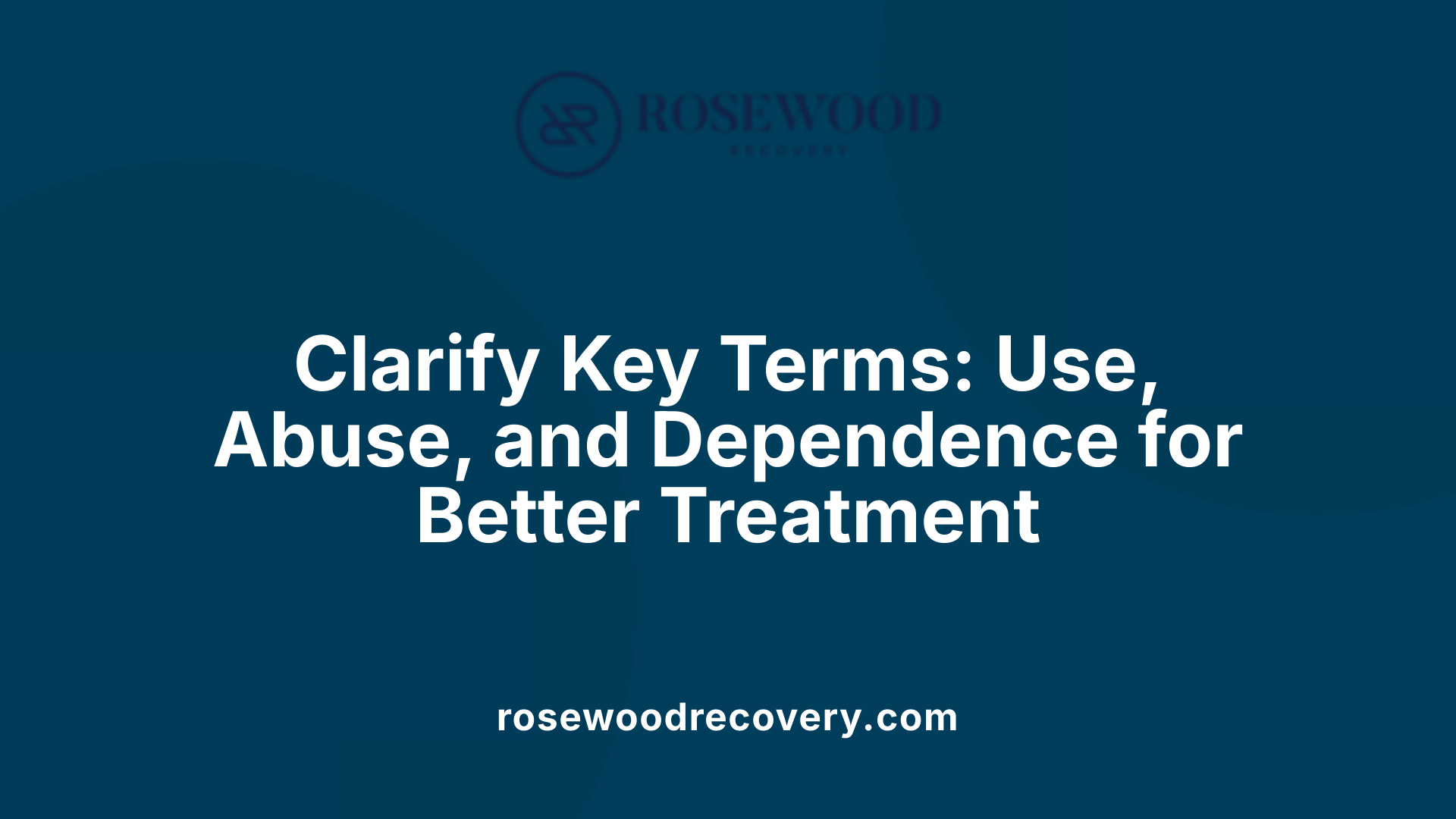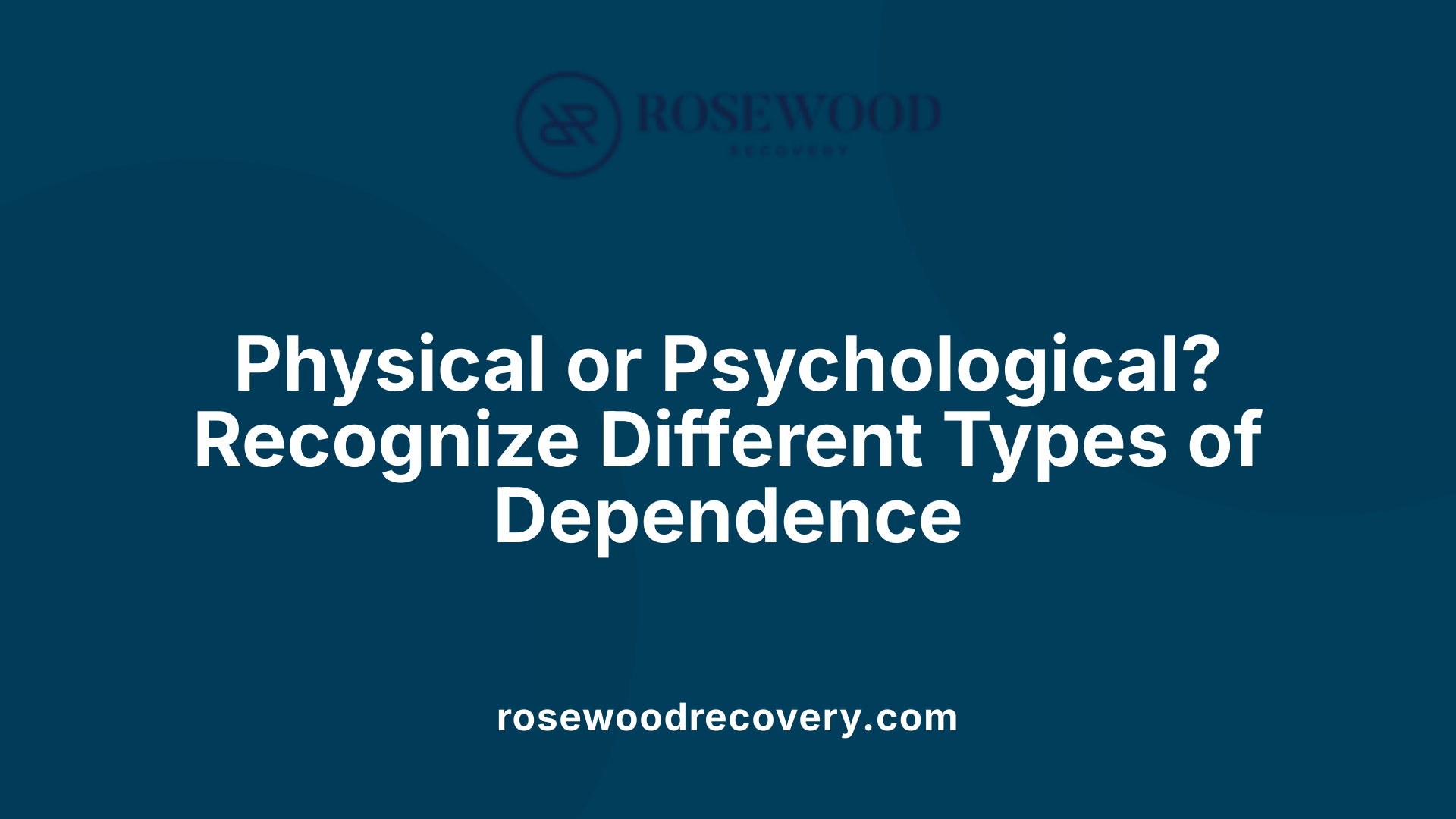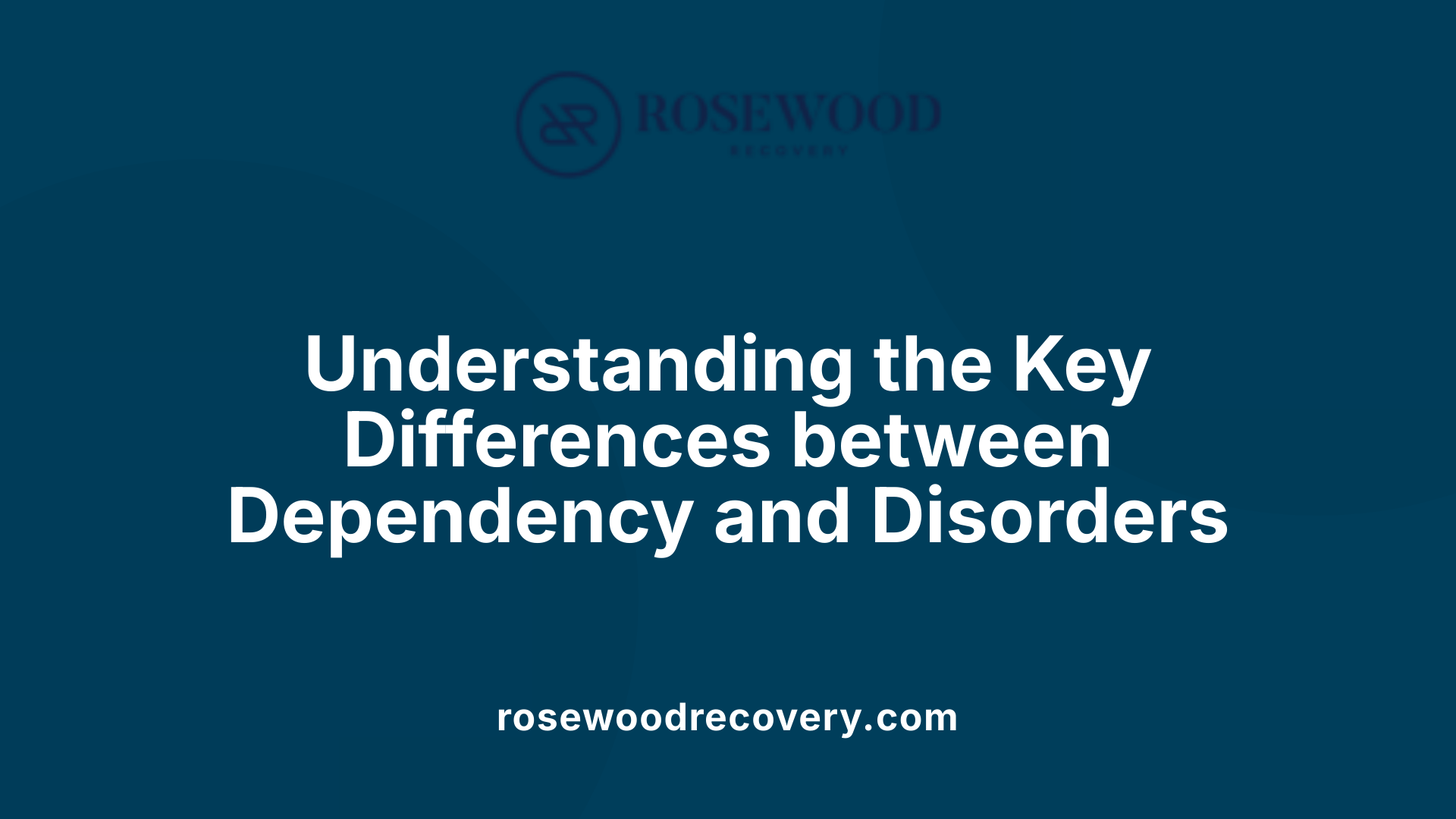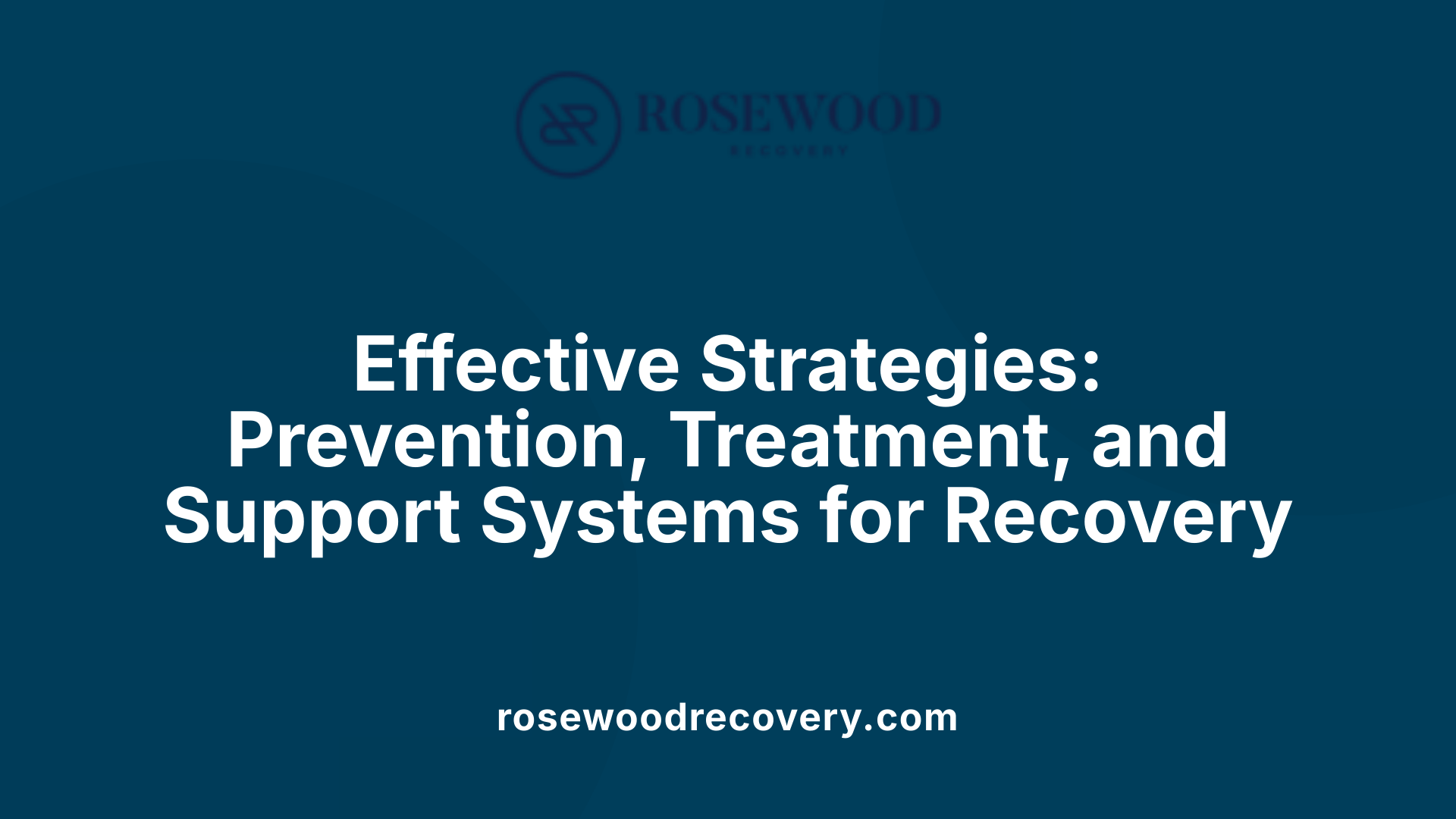The difference between substance use and substance dependence
Understanding the Complexities of Substance Use and Dependence

A Clear Distinction for Better Awareness
Understanding the differences between substance use, abuse, and dependence is crucial for both educational purposes and personal awareness. While these terms are often used interchangeably in casual conversation, they refer to distinct states of drug and alcohol engagement, each with its own implications for health, behavior, and treatment. This article explores these differences in depth, clarifying common misconceptions and providing a nuanced understanding of how these conditions develop, manifest, and are managed.
Defining Substance Use, Abuse, and Dependence

What is the difference between substance use, substance abuse, and substance dependence?
Substance use generally means simply consuming alcohol or drugs, whether it's drinking a glass of wine or taking prescribed medication. It often involves controlled and moderate consumption without causing harm.
Substance abuse, on the other hand, refers to patterns of use that become harmful or hazardous. This includes using substances in ways that lead to health issues, relationship problems, or legal troubles. It often involves excessive or risky behaviors, like binge drinking or misuse of prescription medications.
Substance dependence, often called addiction, is marked by a physical and mental reliance on the substance. It includes signs like developing a tolerance (needing more of the substance to achieve the same effect) and experiencing withdrawal symptoms such as anxiety, tremors, or nausea upon stopping. Dependence is characterized by a compulsive drive to seek and use the substance despite awareness of its negative consequences.
While these terms are interconnected, they highlight different aspects of substance use behaviors.
The stages of substance engagement
People often progress through various stages from first trying a substance to potentially developing a disorder. Initial experimentation may be motivated by curiosity or social influences. If use continues, it can become more frequent and problematic.
Repeated substance use can lead to increased tolerance, meaning larger doses are needed to get the same effect. Over time, this escalation can result in dependence, where the body adapts neurologically and physically.
The final stage involves a loss of control, known as addiction, where the individual finds it difficult to stop despite experiencing adverse outcomes. This progression underscores the importance of early intervention.
How control over substance use varies
Control over substance use is not the same for everyone. Some may use substances occasionally without harmful effects, while others develop patterns that are compulsive and difficult to manage.
Dependence involves physical changes that cause withdrawal symptoms, but it does not necessarily mean the person has a mental inability to stop. Conversely, addiction focuses on behavioral and psychological components like cravings and compulsive seeking.
Many drugs, such as antidepressants, can cause dependence without addiction. Similarly, individuals may develop addiction without physical dependence, as seen with substances like cocaine.
Understanding these differences helps tailor treatment approaches and reduces stigma. Recognizing that dependence and addiction can occur separately emphasizes the need for comprehensive care that addresses both physical and mental aspects.
Physical versus Psychological Dependence

What is the nature of physical dependence?
Physical dependence occurs when the body undergoes adaptive changes due to regular substance use. These changes lead to withdrawal symptoms, which can include nausea, vomiting, tremors, insomnia, anxiety, and other physical symptoms if the substance use is suddenly reduced or stopped. Such dependence develops over time, especially with long-term use of certain drugs like opioids, alcohol, or benzodiazepines. It is characterized by tolerance, meaning that higher doses are needed to achieve the same effect, as the body becomes accustomed to the substance. Importantly, physical dependence is a bodily response and does not necessarily imply problematic behavior or compulsive drug-seeking.
Psychological dependence and its implications
Psychological dependence refers to an emotional or mental reliance on a substance or activity. It involves cravings, compulsions, and an obsessive focus on obtaining or using the substance. People with psychological dependence often struggle with controlling their use despite knowing the negative consequences. This form of dependence impacts motivation, decision-making, and emotional regulation, often leading individuals to prioritize drug use over other responsibilities or social activities. For example, someone might feel unable to sleep or cope with stress without alcohol or drugs.
The distinction between dependence and addiction
While physical dependence involves bodily adaptations and withdrawal symptoms, addiction encompasses a broader set of behavioral and neurological changes. Addiction is characterized by loss of control over drug use, intense cravings, and continued use despite harmful effects. It is a brain disorder involving changes in the reward pathway that lead to compulsive substance-seeking behaviors. Interestingly, it is possible to be physically dependent on a drug without being addicted, such as with some antidepressants or beta-blockers. Conversely, a person can be addicted to a substance like cocaine without experiencing significant physical withdrawal symptoms.
Understanding the differences helps avoid misconceptions and reduces stigma. Dependence is a physical phenomenon, while addiction involves complex psychological and social elements. Recognizing this distinction is crucial for appropriate diagnosis, treatment, and compassionate care.
The Spectrum of Substance Use Disorders and Their Diagnostic Criteria
What is substance use disorder and how does it differ from substance-induced disorder?
Substance use disorder (SUD) is a medical diagnosis describing a problematic pattern of substance use leading to significant distress or impairment. It involves symptoms like cravings, loss of control over use, increased tolerance, and withdrawal symptoms. People with SUD continue using despite facing health issues, relationship problems, or legal troubles.
In contrast, substance-induced disorders are direct effects caused by recent substance consumption. These include intoxication, withdrawal, or overdose effects, and often resemble other mental health issues like depression or anxiety. These symptoms usually appear within days or weeks of substance use and can persist even after stopping the drug, but they are directly caused by the substance.
The main distinction lies in scope: SUD refers to a chronic, ongoing pattern of problematic use, whereas substance-induced disorders are specific states or symptoms resulting from recent use. Diagnosis of SUD is based on criteria from the DSM-5, requiring at least two symptoms over a 12-month period.
How is severity classified: mild, moderate, severe?
The severity of substance use disorder is categorized according to the number of criteria met during assessment:
- Mild: 2-3 symptoms
- Moderate: 4-5 symptoms
- Severe: 6 or more symptoms
This classification helps medical professionals tailor treatment plans and provides insight into the level of impact on a person’s life. For example, mild SUD may be manageable with outpatient therapy, whereas severe cases might need intensive inpatient care.
What are the DSM-5 criteria for diagnosis?
The DSM-5 specifies 11 criteria used to diagnose SUD. These include:
| Criterion | Description | Example | |--------------|--------------------------|------------------| | 1. Larger amounts or over longer periods | Using more substance or for longer than intended | Drinking heavily over weeks instead of a single evening | | 2. Unsuccessful efforts to cut down | Tried to stop but couldn't | Attempted sobriety but relapsed | | 3. Spending a lot of time obtaining or using | Excessive time on substance-related activities | Multiple trips to buy pills | | 4. Craving | Strong desire or urge to use | Strong urge to consume alcohol | | 5. Failure to meet obligations | Neglecting responsibilities at work, school, or home | Missing work frequently due to substance use | | 6. Continuing despite problems | Use continues despite physical or mental health issues | Drinking despite liver problems | | 7. Giving up activities | Loss of interest in hobbies or social activities | Stopping sports or social outings | | 8. Use in hazardous situations | Using in dangerous conditions | Operating a vehicle while intoxicated | | 9. Tolerance | Needing more of the substance to achieve effects | Taking larger doses over time | | 10. Withdrawal | Physical or mental symptoms when stopping | Shaking, anxiety, or nausea when not using | | 11. Noticeable physical or behavioral changes | Such as mood shifts, weight changes, social withdrawal |
Diagnosis requires at least two of these symptoms within a year, with severity based on total criteria.
What are the common signs and symptoms?
Signs of SUD include:
- Craving or a strong desire to use the substance
- Using larger amounts over time
- Unsuccessful tries to cut down
- Prioritizing substance use over responsibilities
- Developing tolerance where more is needed to achieve effect
- Experiencing withdrawal symptoms like nausea, sweating, or mood swings
- Neglecting activities and relationships
- Continual use despite negative consequences
Behavioral signs include social withdrawal, secretive behavior, neglect of personal hygiene, and physical signs like weight changes or sleep disturbances.
| Symptom | Physical or Behavioral | Possible Indications |
|---|---|---|
| Cravings | Psychological | Obsessive thoughts about use |
| Increased tolerance | Physical | Need for higher doses |
| Withdrawal symptoms | Physical | Nausea, tremors, mood swings |
| Social withdrawal | Behavioral | Moving away from friends and family |
| Neglect of responsibilities | Behavioral | Missed work or school |
Recognition of these signs is crucial for early intervention and proper treatment planning in managing substance use disorders.
Signs, Symptoms, and Risk Factors
What are the signs, symptoms, causes, and classifications of substance use versus dependence?
Recognizing the differences between substance use, dependence, and addiction is essential for understanding treatment needs. Typical signs of substance use or dependence include behavioral changes such as social withdrawal, secretiveness, and neglecting responsibilities at work or school. Physical signs may involve changes in sleep patterns, physical appearance, weight, or hygiene, along with memory issues and mood swings.
Dependence often manifests through increased consumption over time, where individuals require larger doses to achieve the same effects—a phenomenon known as tolerance. Alongside this, intense cravings for the substance are common and tend to persist despite negative consequences. Withdrawal symptoms can occur if drug use is halted or reduced, which include insomnia, anxiety, tremors, nausea, vomiting, and mood swings.
The development of dependence and addiction is influenced by an interplay of factors. Genetic predisposition plays a role, making some individuals more vulnerable. Environmental stressors, mental health challenges, social influences, and early exposure are also significant contributors.
Dependence is primarily a physical adaptation. It involves the brain's physiological responses leading to tolerance and withdrawal symptoms. In contrast, addiction involves a psychological component, including compulsive drug-seeking behavior driven by changes in the brain’s reward system.
Classifying dependence and addiction involves assessing the severity based on the number of symptoms. The DSM-5 categorizes substance use disorder severity as mild, moderate, or severe—each level reflecting the extent of behavioral, physical, and psychological signs. Identifying these symptoms guides clinicians in developing tailored treatment plans, whether through therapy, medication, or support systems.
Understanding these signs and classifications enables early intervention, which can significantly improve recovery outcomes. Education about these symptoms and risk factors is vital in preventing progression from casual use to dependence or addiction.
Impacts of Language and Misdiagnosis on Treatment Outcomes

How do dependency and disorder differ?
Dependency and substance use disorder are related but distinct concepts that influence diagnosis and treatment, often leading to confusion. Dependency primarily refers to the physical and physiological reliance on a drug or alcohol, evidenced by tolerance (needing more of the substance to achieve the same effect) and withdrawal symptoms (like nausea, tremors, or anxiety) when substance use stops. It is a biological state that can exist without problematic behavior.
On the other hand, substance use disorder (SUD) is a comprehensive diagnosis that includes behavioral and psychological components, such as compulsive drug-seeking, inability to control use, and continued use despite harmful consequences. SUD impacts brain functions related to decision-making, impulse control, and reward processing, often leading to significant social or occupational difficulties.
This distinction matters because dependence can occur without addiction; for example, a person may physically depend on antidepressants or beta-blockers without experiencing compulsive behaviors. Conversely, individuals may be addicted to a drug like cocaine without developing a significant physical dependence or withdrawal symptoms.
Furthermore, the terminology used in clinical settings influences perceptions and treatment approaches. Mislabeling dependence as addiction can stigmatize individuals and discourage seeking help. It may also distort the understanding of recovery, especially when treatments like medication-assisted therapy (e.g., buprenorphine or methadone for opioid use disorder) are viewed negatively if perceived as merely dependence rather than evidence-based treatment.
Overall, recognizing the differences between physical dependence and addiction enables more accurate diagnosis and tailored interventions, reducing stigma and improving patient outcomes.
Treatment, Prevention, and the Role of Support Systems

What are the differences between addiction, dependence, and tolerance?
Addiction is a chronic brain disorder marked by compulsive drug-seeking behavior and continued use despite negative consequences, often accompanied by cravings and behavioral changes. Dependence involves the body’s physical adaptation to a substance, leading to withdrawal symptoms such as nausea, tremors, and anxiety when use is abruptly stopped. Tolerance refers to needing higher doses of a drug to achieve the same effect, which can escalate consumption and increase the risk of dependence or addiction.
Although these conditions can occur together, they are fundamentally different. Dependence is a physical state, while addiction includes psychological and behavioral aspects, such as loss of control and compulsive use. Tolerance usually develops through repeated drug exposure, leading users to increase doses over time.
Understanding these distinctions is crucial for effective treatment. Dependence might be managed with medical detoxification, whereas addiction often requires behavioral therapy and ongoing support. Recognizing that dependence does not always mean addiction—and vice versa—helps in designing appropriate interventions.
Overview of treatment options for dependence and addiction
Treatment strategies vary depending on the severity and the specific substance involved. For physical dependence, detoxification helps manage withdrawal symptoms safely. Medications like buprenorphine or methadone are effective for opioid use disorder and help reduce cravings.
Behavioral therapies play a vital role in addiction treatment. These include cognitive-behavioral therapy (CBT), motivational interviewing, and family therapy, which target behavioral patterns and underlying issues.
In outpatient or inpatient programs, comprehensive support addresses both the physical and psychological aspects of dependence. Support groups, such as Alcoholics Anonymous or Narcotics Anonymous, provide peer support and accountability.
The importance of early intervention
Early detection of substance problems significantly increases the chances of successful recovery. When signs of misuse or dependence are recognized promptly, appropriate treatment can prevent escalation into full-blown addiction.
Intervention strategies include screening in primary care, educational campaigns, and community outreach. Early treatment reduces the risk of long-term brain changes and social consequences.
The impact of changing language on treatment and stigma
Language shapes perceptions; referring to addiction as a
Understanding, Recognizing, and Addressing Substance Relationships
Clear differentiation between substance use, abuse, dependence, and addiction is essential for effective education, prevention, and treatment strategies. Recognizing the physical and psychological components of dependence helps in identifying risk factors and signs early. Distinguishing these conditions dispels misconceptions, reduces stigma, and promotes better health outcomes. As our understanding of brain chemistry and behavioral science evolves, so too must our language and approaches toward helping individuals manage their relationship with substances. Ultimately, awareness, timely intervention, and supportive care form the backbone of successful recovery journeys.
References
- What is the difference between substance abuse and substance ...
- Drug dependence is not addiction—and it matters - PMC
- The Difference Between Drug Dependence and Addiction - Unite Us
- Substance use, abuse, and addiction
- What Is the Difference Between Substance Abuse ... - MedicineNet
- Substance Use Disorder (SUD): Symptoms & Treatment
- Addiction vs. dependence: Definitions and differences
More Articles
Recovery Begins Here
Click below to get in touch and schedule a consult call with our team to begin your journey towards happiness and freedom.
Rosewood Recovery does not discrimate against any person because of the race, color, religious creed, ancestry, age, sex, sexual orientation, gender identity, national origin, handicap or disability or the use of a guide or support animal because of the blindness, deafness or physical handicap.



.jpeg)
.jpeg)
